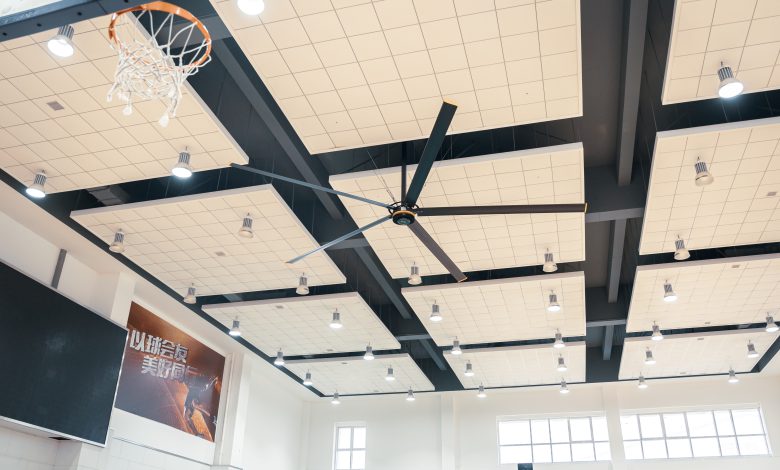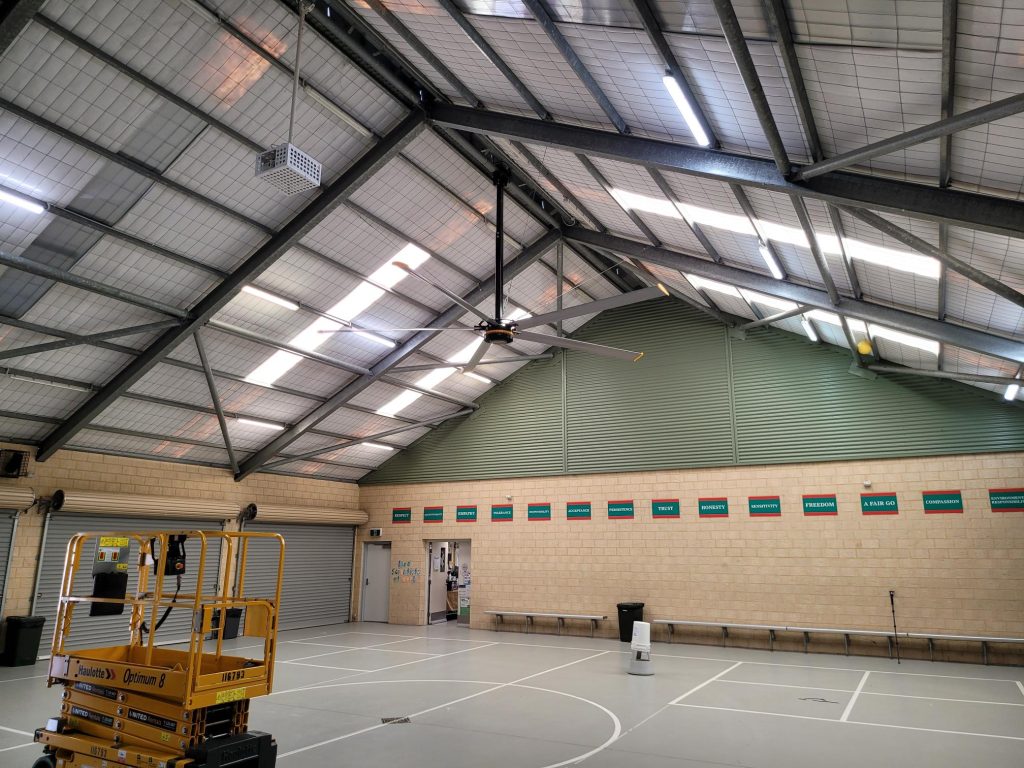
It’s getting hot outside, and inside as well.
As the weather warms up and summer approaches, keeping staff and students cool is a priority. Fans are an important ingredient in your cool-school mix, and can do more than just lower the temperature.
Proper ventilation and air circulation are crucial for good air quality in classrooms. Research published by the University of New South Wales in 2021 found that poor air quality in the classroom can affect student health and wellbeing, as well as learning capacity through concentration loss, tiredness and fatigue.
Read the latest print edition of School News HERE
The lead author of the study, Associate Lecturer Dr Shamila Haddad, said children are particularly vulnerable to the impacts of poor air quality. “Poor indoor air quality in classrooms is a critical problem given that students spend a substantial amount of their daytime in the classroom,” Dr Haddad said. “Pollutant exposure during developmental stages may produce lifelong issues such as respiratory infections and upper and lower airways disorders.”
Another study from RMIT researchers found that Victorian classrooms have very poor air quality, with carbon dioxide levels in many classrooms far exceeding the maximum acceptable standards. Australia’s National Construction Code (NCC) specifies CO₂ concentration levels of less than 850 parts per million (ppm), averaged over eight hours, for acceptable air quality. The study found CO₂ concentrations in Victorian classrooms ranging from 912 to 2235 ppm, and up to 5000 ppm at certain times. These concentration levels, the researchers said, indicate very poor ventilation and slow air exchange between indoor and outdoor air.
Opening windows and doors to ventilate classrooms is not always possible. Blocking out external noise from other school activities, traffic or construction, or shielding from extreme weather may mean keeping windows closed is best. In these situations, fans can help to improve the air quality in your classrooms.
Kyle Brown from Mammoth Fans said installing fans, particularly high-volume, low-speed (HVLS) fans, in large school spaces provides numerous advantages beyond just cooling. “They significantly improve air circulation, which helps enhance indoor air quality by preventing stuffiness and reducing the buildup of airborne pollutants and allergens.”

Many large spaces in schools like gymnasiums, sports halls and auditoriums can be decades old, and built in a time before air conditioning became commonplace. These areas can benefit substantially from the addition of HVLS fans. “By distributing air more effectively, these fans can also reduce the need for air conditioning, leading to substantial energy and cost savings. HVLS fans also promote a comfortable and consistent temperature throughout large spaces, creating an ideal environment for students to stay focused and engaged in their learning,” Mr Brown said.
A well-ventilated, climate controlled space is particularly important for large areas. Every teacher and school leader is familiar with the fidgeting and chatter that can ripple through an assembly hall when students find it difficult to concentrate. Beyond this, ensuring proper air circulation in large spaces can help to disperse air-borne pollutants, and help to keep staff and students healthy.
As well as fans for classrooms, staff rooms and other small spaces, a range of large industrial fans are available for schools. Many of these fans are low noise, require minimal maintenance and can be easily installed by qualified suppliers.
“When installing fans in schools, key factors to consider include the size and layout of the space to ensure proper air circulation and coverage,” Mr Brown said.
“Schools should also evaluate the energy efficiency of the fans to reduce long-term operational costs. Additionally, noise levels, durability, and safety features are crucial to maintaining an environment that is conducive to learning and protecting the students.”
Mr Brown highlighted several significant technological developments that have been made in HVLS fans. “Advanced motor designs, such as direct-drive motors, have improved energy efficiency and reduced maintenance needs compared to traditional gear-driven systems. Some HVLS fans now include smart controls and integration with building automation systems, allowing for real-time adjustments based on occupancy or temperature. Additionally, modern designs offer quieter operation and optimised blade shapes for better airflow, making them more effective in large spaces like schools, warehouses, and gyms.
“PMSM technology is one of the most advanced examples of fan engineering on the market today,” Mr Brown said. “Compared with traditional brush and AC motors, the Permanent Magnet Synchronous Motor provides a larger, more comfortable air volume that is both dynamic and quiet.”
As you move around the rooms and buildings of your school, take a deep breath. Is the air quality in your school the best it can be? If not, fans may be a welcome addition to all areas of you school, both big and small.
This article was first published in the Term 4 edition of School News. Read it HERE







